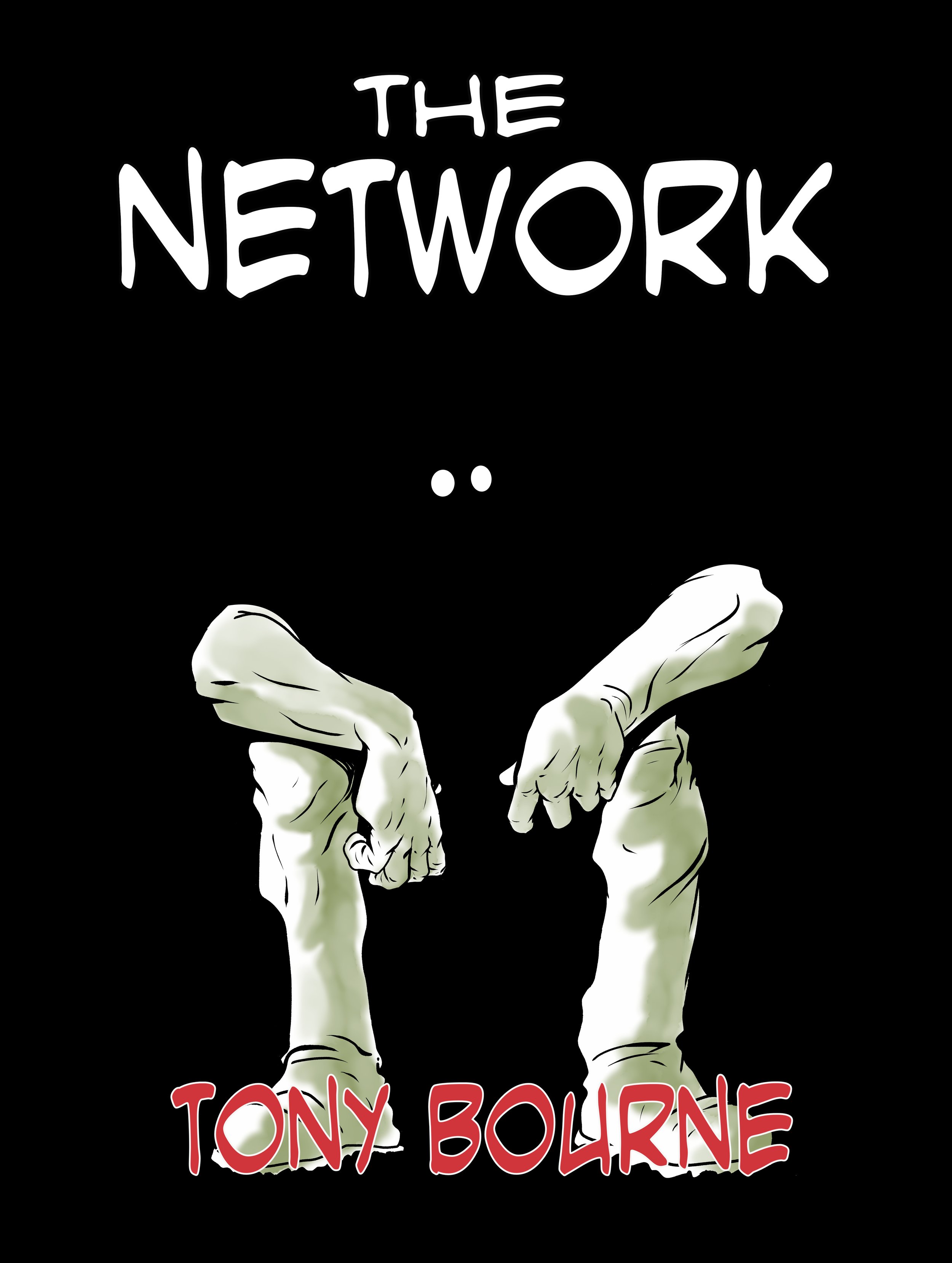The Network: Murder in a Dying World

Creative Team
writer/illustrator: TONY BOURNE
The Network mixes science fiction, mystery, and social commentary together for a page-turning experience.
After a catastrophic war against machines, surviving humans are forced to live in a city known as Resurrection. Years later, Detective Miyu Beckford is sent to investigate the murder of one of the few humans allowed to work inside ‘The Network’—a system of robots in control.
Tales of human defeat against metal adversaries aren’t inherently new, but in the case of The Network, this story showcases how in the right hands this type of story can remain interesting.
The story kicks off with Detective Beckford as she hears her boss yelling at her to get to work on the neural implant in her head. She reluctantly gets up, takes the subway into the police station as the sky is filled with red—almost as if it’s on fire. Upon arrival, she is told the high profile case she is assigned to includes a robot body guard called K5. Between The Network’s intense rules and insurgent fighters hiding in the city, she will need all the help she can get.
While much of the story surrounds Detective Beckford’s efforts to find the killer of Dr. Heidi Mallampati and her suspected drug-dealing son, there are also moments of Detective Beckford exploring the city as she talks with gang leaders or processes evidence. This further adds to the world-building and adds to the scale of the experience.
Written and illustrated by Tony Bourne, this 100+ page story manages to build an impressive world without impacting the story. The atmosphere is reminiscent of stories like Blade Runner or Children of Men where humanity is almost apathetic to their dying world. It’s a subtle jab at humanity and this direct commentary remains a consistent tone throughout. This acceptance is present in Detective Beckford as processing murder cases seems like a standard part of life despite it being a career of tragedy.
The writing is well-paced and there isn’t a large amount of exposition. Instead, pieces of information are scattered throughout or there are unique ways in which the robot overlords are clearly everywhere—such as guards by the subway. These visual elements in addition to imaginative elements like jellyfish robots that transport people to The Network when summoned are a nice touch and build upon the lore without asking the reader to suspend too much disbelief.

The art is raw but keeps the reader engaged throughout the story. The color palettes also work well with the art—especially in moments where the sky appears to be full of fire from the global destruction.
There is a directness in this story that feels fresh, and almost even cynical. This is not a happy-go-lucky story. In fact, it is arguably a very intentional story of environmental destruction from warfare, humanity’s apathy to the decay around them, and the violence that seems ever present since the dawn of time. Bourne’s ability to craft such a multi-layered narrative is impressive. It’s clear that Bourne is skilled in crafting a grand story that feels complete.
This sci-fi thriller builds an interesting world where survival isn’t guaranteed and the thematic depths of The Network offer readers plenty to reflect on long after the final panel.
For more on writer/illustrator, be sure to follow in instagram @tonybournecreations.